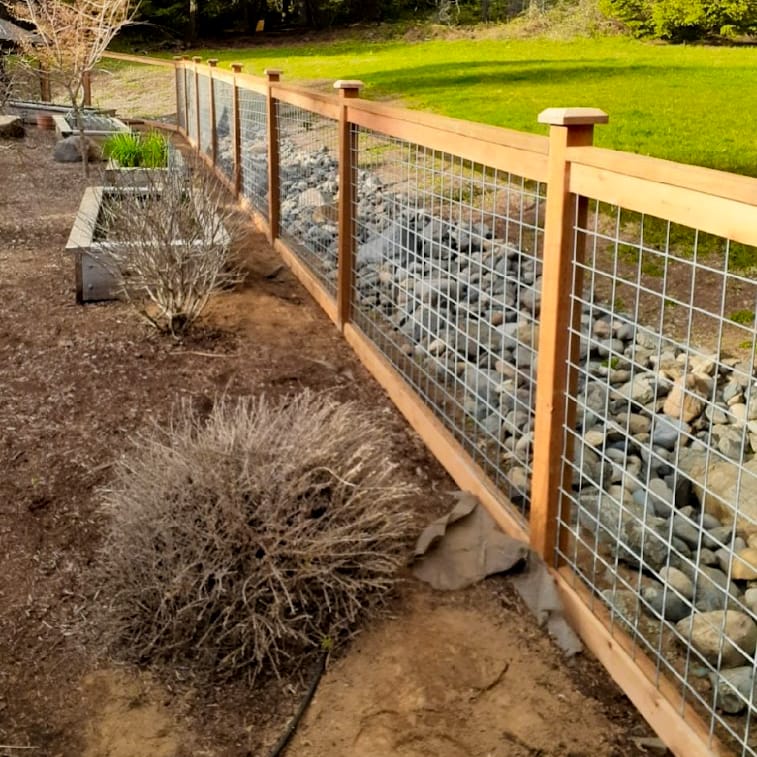All Categories
Featured
Mounting a new fence is an exciting job that can boost your home's safety and security, privacy, and curb charm. While the installation procedure might appear straightforward, the time it takes can vary based upon several elements. Typically, secure fencing setup takes anywhere from 1 to 5 days, yet this can prolong depending on the dimension, complexity, and materials entailed.
Average Installment Timelines by Fencing Type. Wood Fences:. Wood fencings are prominent for their all-natural charm, yet their installation can take much longer. A regular wood fence setup covers 2-- 4 days as a result of steps like reducing, setting up, and using protective coatings such as repaint or tarnish.
![]()
Plastic Fences:. Plastic fence is typically quicker to set up since it can be found in pre-assembled panels. Many tasks can be finished in 1-- 3 days, relying on the fence's size.
Chain-Link Fences:. Chain-link fencings are straightforward and can commonly be mounted in 1-- 2 days, making them among the fastest options.
Metal or Wrought Iron Fences:. These fences can take 3-- 5 days or longer because of their weight and the accuracy needed for appropriate placement and securing.
Compound Fences:. Composite products are durable and developed for performance, with installment timelines similar to plastic fencings at 1-- 3 days.
Key Factors That Impact Setup Timelines.
![]()
Exactly How to Plan For a Faster Installment. Conduct a Website Evaluation: Walk your building to recognize potential obstacles, such as slopes, tree origins, or energy lines. Prepare for Authorizations: Begin the license process as early as possible to stay clear of hold-ups. Select the Right Period: Select a time when weather are desirable for outdoor job. Communicate with Contractors: Review your project timeline and any details concerns prior to setup starts. Final thought. While many fencing setups are finished in simply a few days, numerous elements can influence the timeline, such as product type, property size, and weather problems. By comprehending these aspects and preparing your website ahead of time, you can aid make sure a smooth installation process. Partnering with experienced experts will likewise make a significant difference, guaranteeing your fencing is installed efficiently and to the greatest criterion.
Average Installment Timelines by Fencing Type. Wood Fences:. Wood fencings are prominent for their all-natural charm, yet their installation can take much longer. A regular wood fence setup covers 2-- 4 days as a result of steps like reducing, setting up, and using protective coatings such as repaint or tarnish.

Plastic Fences:. Plastic fence is typically quicker to set up since it can be found in pre-assembled panels. Many tasks can be finished in 1-- 3 days, relying on the fence's size.
Chain-Link Fences:. Chain-link fencings are straightforward and can commonly be mounted in 1-- 2 days, making them among the fastest options.
Metal or Wrought Iron Fences:. These fences can take 3-- 5 days or longer because of their weight and the accuracy needed for appropriate placement and securing.
Compound Fences:. Composite products are durable and developed for performance, with installment timelines similar to plastic fencings at 1-- 3 days.
Key Factors That Impact Setup Timelines.
- Project Size and Fencing Size. The general dimension of the task is a main factor. Bigger residential or commercial properties or longer fences require even more time to complete, as extra messages, panels, and labor are involved.
- Website Prep work. Before setup can start, the site needs to prepare. Cleaning debris, leveling irregular terrain, and dealing with below ground utilities can add hours or days to the procedure.
- Soil Problems. Soft soil enables faster excavating of post holes, while clay-filled or rough soil can decrease progress. Contractors might need specific devices in these situations.
- Authorizations and HOA Approvals. Regulatory demands can postpone the beginning of installment. Guarantee all essential authorizations and approvals from your neighborhood government or HOA are safeguarded ahead of time.
- Climate and Seasonal Elements. Rain, snow, or extreme warmth can interrupt setup schedules. As an example, icy ground in winter season is harder to dig, potentially extending the process.
- Style Intricacy. Custom-made fences with elaborate styles, curves, or attractive aspects need added time for precise measurements and setup.

- Team Size and Performance. A larger group of seasoned installers can complete jobs quicker than a little or less skilled team.
Exactly How to Plan For a Faster Installment. Conduct a Website Evaluation: Walk your building to recognize potential obstacles, such as slopes, tree origins, or energy lines. Prepare for Authorizations: Begin the license process as early as possible to stay clear of hold-ups. Select the Right Period: Select a time when weather are desirable for outdoor job. Communicate with Contractors: Review your project timeline and any details concerns prior to setup starts. Final thought. While many fencing setups are finished in simply a few days, numerous elements can influence the timeline, such as product type, property size, and weather problems. By comprehending these aspects and preparing your website ahead of time, you can aid make sure a smooth installation process. Partnering with experienced experts will likewise make a significant difference, guaranteeing your fencing is installed efficiently and to the greatest criterion.
Latest Posts
Explore WyHy Federal Credit Union – Low Rates for Members
Published en
1 min read
Discover Montclare Auto Repair’s Leading Auto Repairs and Why Drivers Rely On Them
Published en
1 min read
Explore Your Financial Partner at WyHy – Wyoming’s Best Banking Choice for Your Money Goals
Published en
1 min read
More
Latest Posts
Explore WyHy Federal Credit Union – Low Rates for Members
Published May 28, 25
1 min read
Discover Montclare Auto Repair’s Leading Auto Repairs and Why Drivers Rely On Them
Published May 27, 25
1 min read
Explore Your Financial Partner at WyHy – Wyoming’s Best Banking Choice for Your Money Goals
Published May 24, 25
1 min read